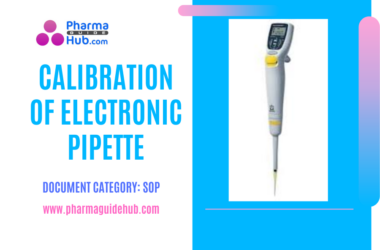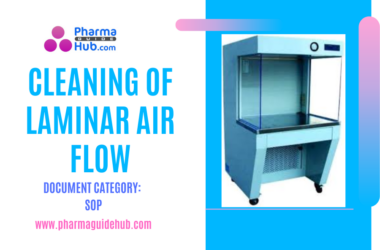
OBJECTIVE:
To lay down a procedure for microbial characterization, identification and strain typing.
SCOPE:
This SOP is applicable for the microbial characterization, identification and strain typing at {Company Name} {Location}.
RESPONSIBILITY:
In charge-Microbiology/ Head-Quality Control: for review and approval of SOP.
Microbiologist- to follow the procedure as per SOP.
ACCOUNTABILITY:
QA Head shall be Accountable for implementation of SOP.
PROCEDURE:
DEFINITIONS The definitions listed here apply in the context of this SOP and may or may not be applicable in all other usage.
Culture- The growth of organisms such as bacteria and fungi in a nutrient medium, usually under controlled condition.
Microbial identification- The determination of which broad group (e.g. bacteria, yeast or mold) or narrow group (e.g. genus and/or species) to which a microbial isolate belongs.
Microbial characterization- Type of identification based on colony growth, cellular morphology, differential straining, and key diagnostic features to characterize a microbial isolate.
Strain- A specific isolate of a species that is maintained in pure culture and is characterized. The type strain is representative of the species that provides a reference for the species based on its historic isolation, characterization and deposition in recognized culture collections.
Strain Typing- Part of epidemiological identification of microbial isolates using methods such as pulsed – field gel electrophoresis, riboprinting, arbitotily primed polymerized chain reaction and whole genome ordered restriction or optical mapping.
Click the link to download word file copy of this document: https://pharmaguidehub.com/product/microbial-characterization-identification-and-strain-typing/
Principle:
Microbial identification program is based on the different analytical methodologies and limitations inherent to the method and/or arise from the database limitations accompanied by matching characteristics to an established standard organism.
Microbial characterization for microbial isolates is determination of colony morphology, cellular morphology by using staining techniques (simple staining, gram staining or other differential staining) and biochemical reactions which are necessary to establish database for native micro flora.
The identified micro-flora shall be useful for risk assessments performed in non-sterile and sterile product manufacturing environments with respect to product quality and safety.
Method for Microbial Characterization, identification and strain typing:
Microbial characterization, identification and strain typing shall be done using following steps-
- Primary screening based on colony morphology.
- Differentiation based on Cellular morphology using staining techniques.
- Biochemical screening.
- Microbial identification by phenotypic method.
- Microbial identification by genotypic methods.
Primary screening based on colony morphology:
Microorganisms observed on Microbial media shall be selected based on the colony morphology.
Primary screening and isolation shall be done by streaking colony on solid media and incubated at appropriate incubation condition.
Differentiation based on Cellular morphology using staining techniques:
Gram/spore staining or other staining shall be performed for the isolated colonies.
Based on the microscopic observation of gram staining/spore staining results, cellular morphology shall be ascertained.
Positive control should be performed to negate the identification error in gram/spore staining.
Biochemical screening:
Biochemical screening shall be done using – oxidase, catalase and coagulase tests as applicable.
Based on the biochemical screening results Biochemical characteristics shall be ascertained.
Microbial identification by phenotypic method:
Phenotypic identification shall be done using appropriate instrumentation such as Vitek 2 compact system, Mini API identification system, or any other suitable identification system.
Identification systems are principally based on carbon utilization and biochemical reactions (e.g. Vitek and Mini API); fatty acid profiling by gas-liquid chromatography (e.g. MIDI) or whole cell composition by Mass spectrophotometer (e.g. MALDI-TOE).
The data generated through phenotypic identification is generally sufficient and will enable to conduct a thorough investigation and to recommend corrective actions as appropriate.
Microbial identification by genotypic methods:
Genotypic identification method shall be used in critical microbiological investigations such as sterility and media fill failure investigations where, it is necessary to demonstrate that the microorganism isolated from the product test is identical to a microorganism isolated from the materials and/or the environment.
Identification by genotypic method shall be done using – DNA-DNA hybridization, PCR, 16S and 235 rRNA sequencing, multi-locus sequence typing (MLST), pyro-sequencing, DNA probes and analytical ribo-typing etc.
Nomenclature and preservation of identified isolates:
All isolates should be identified with unique identification number as per procedure given in SOPs.
Isolates should be preserved preferably by cryopreservation technique.
A colored photo graph showing colony characteristics on microbial agar medium shall be maintained with unique identification number.
Photographs shall be preserved in “ALBUM” along with the colony morphology and growth characteristics for future reference.
Reference literature from authentic sources shall be collected supporting the habitats, pathogenicity of the isolate (if applicable) and archived along with the database of newly identified isolate.
The isolates shall be preserved up to preparation of annual summary report.
Based on annual summary report, minimum six numbers of in-house floras shall be selected and preserved based on the predominance and type of activity.
These micro-floras shall be maintained as “In house flora” for one year period.
Out of six in-house floras per activity, the first predominant four in-house floras shall be used in routine microbiological studies and later two shall be kept as a “reserved isolate”.
During course of maintenance and usage, if any of the four in-house floras are unable to grow, it shall be discontinued and replaced with reserved isolate.
Other isolates shall be discarded and disposed off as per site specific procedure for culture disposition.
Click the link to download word file copy of this document: https://pharmaguidehub.com/product/microbial-characterization-identification-and-strain-typing/
Criteria for Microbial identification:
Microbial identification shall be performed (but not limited to) as per below given criteria:
Atypical colony morphology observed during routine microbiological analysis and viable count monitoring of environment, surface, personnel and water, if applicable.
Microbial colony/colonies observed in Water for injection and in ISO-5 and ISO-6 grade area.
In case of out of trend and out of specification results.
Growth having typical/atypical characteristics observed on selective agar.
Frequency based identification (but not limited to) shall be in place as given in table:
01. Table: Showing minimum identification frequencies in different areas:
| Sr. No. | Area | Frequency |
| 1. | Water for injection | 100 % identification |
| ISO-5 and ISO-6 Grade area | ||
| Monitoring results of operators working in ISO-5 and ISO-6 area. | ||
| Microbial out of specification results. | ||
| Typical / atypical growth on selective agar. | ||
| 2. | Purified water | Atypical colony observed. |
| ISO-7 and ISO- 8 Grade area | ||
| Result of other monitoring activities in ISO- 7 and ISO- 8 area as applicable. |
Annual summary Report and Data trending:
Annual summary report for identified isolates shall be prepared including-
- List of all isolates identified throughout the year based on the activity.
- Pre-dominancy of specific flora and its source based on the type of activity.
- Trending of typical flora on percent basis.
- Correlation of isolated flora to alert/action results in case of monitoring results if any.
- Correlation of isolated flora to OOT/OOS results in case of raw material and finished product results, if any.
- Recommendation for usage of predominant microbial flora in routine microbiology studies based on the source from where they are isolated.
REFERENCES:
Not Applicable
ANNEXURES:
Not Applicable
ENCLOSURES: SOP Training Record.
DISTRIBUTION:
Master Copy : Quality Assurance Department
Controlled Copy No. 01 : Head Quality Assurance
Controlled Copy No. 02 : Head QC (Micro)
ABBREVIATIONS:
| QC | : | Quality control |
| No. | : | Number |
| SOP | : | Standard Operating Procedure |
REVISION HISTORY:
CHANGE HISTORY LOG
| Revision No. | Details of Changes | Reason for Change | Effective Date |
| 00 | New SOP | Not Applicable | To Be Written Manual |
Click the link to download word file copy of this document: https://pharmaguidehub.com/product/microbial-characterization-identification-and-strain-typing/


